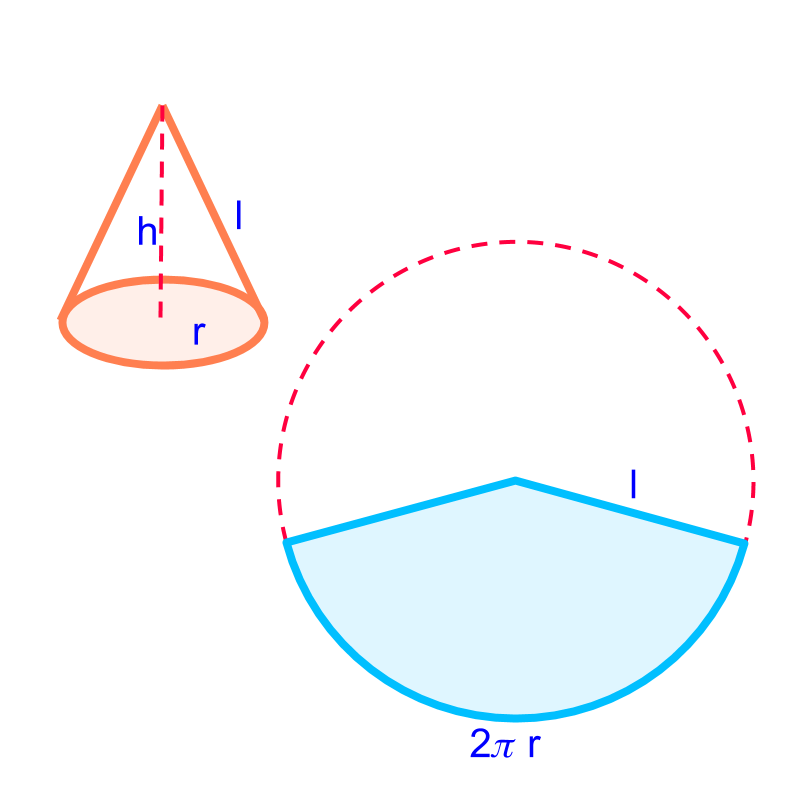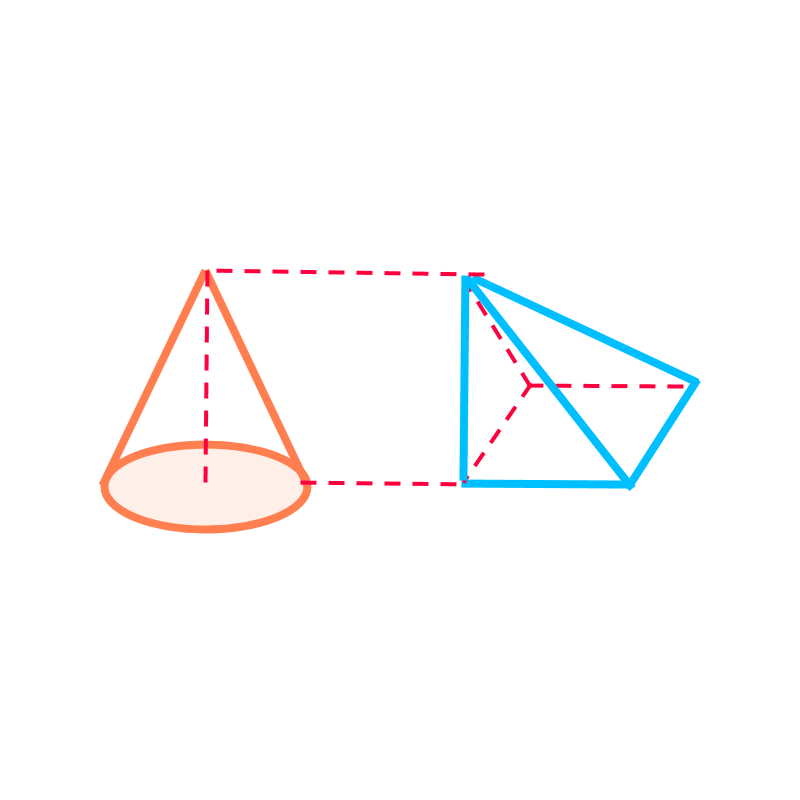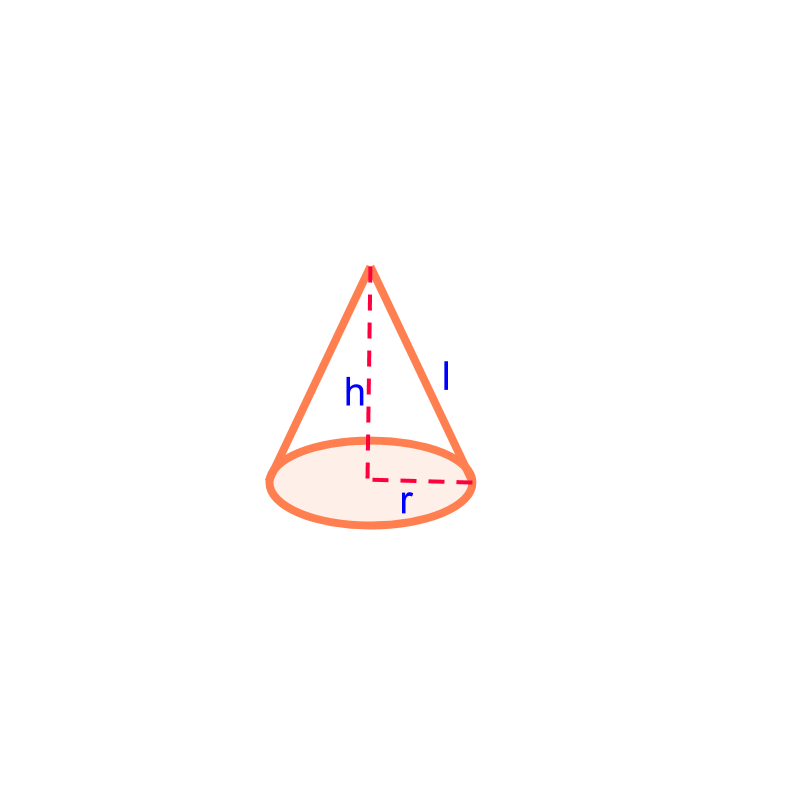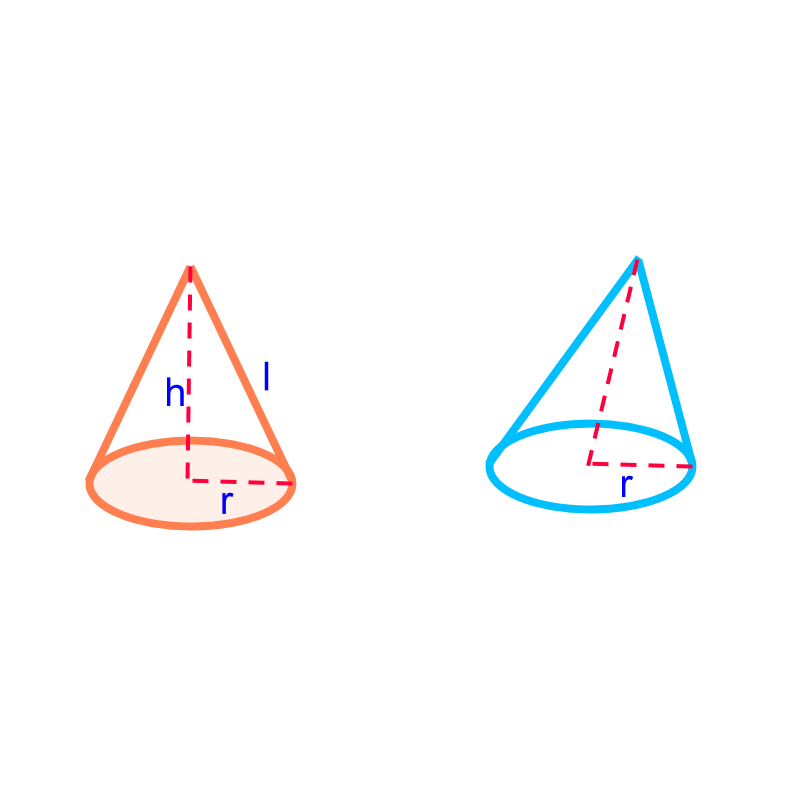
what you'll learn...
Overview
Surface Area and Volume of cone:
 Total surface area of a cone
Total surface area of a cone
area of the base-surface sum of the area of the side-faces
 Volume of a cone
Volume of a cone
cone

The solid shape shown in the figure is "a cone". Cone is a 3D solid shape with a circular-base at the bottom with a curved surface converging to a single point on the top.

We consider only right-circular-cones with its axis at right angle to the base-surface.
Other cones are
(1) elliptical-cones with an ellipse at the base-surface
(2) oblique-cones with the angle, between its axis and the base, not a right-angle.
A right-circular-cone is shown in orange. An oblique-cone is shown in blue.
surface area

The surface area of the cone of radius and height is
Note: A cone consists of
circular base
a sector from a circle with radius of slant-height and arc length .
is the slant height computed as .

A cone of height is shown in orange. The curved lateral surface is unraveled to a sector as shown in blue. The radius of the sector is the slant-height of the cone . And the arc-length of the sector is the perimeter of the base circle of the cone.
Total surface area of the cone
area of the base-surface the area of the curved surface
`= pi r (r + s)
volume
The volume of the cone of radius and height is
volume of the modified-square-pyramid

The cone is shown in orange. As per the Cavalieri's principle in 3D, the cone is equivalently represented by the oblique-pyramid shown in blue.
The modified-pyramid has
• the area at the base surface equal to the area of base-surface of the cone
• the height equal to the height of the cone.
• the cross-sectional area along the vertical axis equal to that of the cone
Volume of the cone
volume of the pyramid with identical cross-sectional area along the vertical axis
What is the volume of a cone of height cm and radius cm?
The answer is ""
summary
Surface Area and Volume of cone:
 Total surface area of a cone
Total surface area of a cone
area of the base-surface sum of the area of the side-faces
 Volume of a cone
Volume of a cone
Outline
The outline of material to learn Mensuration : Length, Area, and Volume is as follows.
Note 1: click here for the detailed overview of Mensuration High
Note 2: click here for basics of mensuration, which is essential to understand this.
• Basics of measurement
→ Summary of Measurement Basics
→ Measurement by superimposition
→ Measurement by calculation
→ Measurement by equivalence
→ Measurement by infinitesimal pieces
→ Cavalieri's Principle (2D)
→ Cavalieri's Principle (3D)
• Perimeter & Area of 2D shapes
→ Circumference of Circles
→ Area of Circles
• Surface area & Volume of 3D shapes
→ Prisms : Surface Area & Volume
→ Pyramids : Surface Area & Volume
→ Cone : Surface Area & Volume
→ Sphere : Surface Area & Volume
• Part Shapes
→ Understanding part Shapes
→ Circle : Sector and Segment
→ Frustum of a Cone